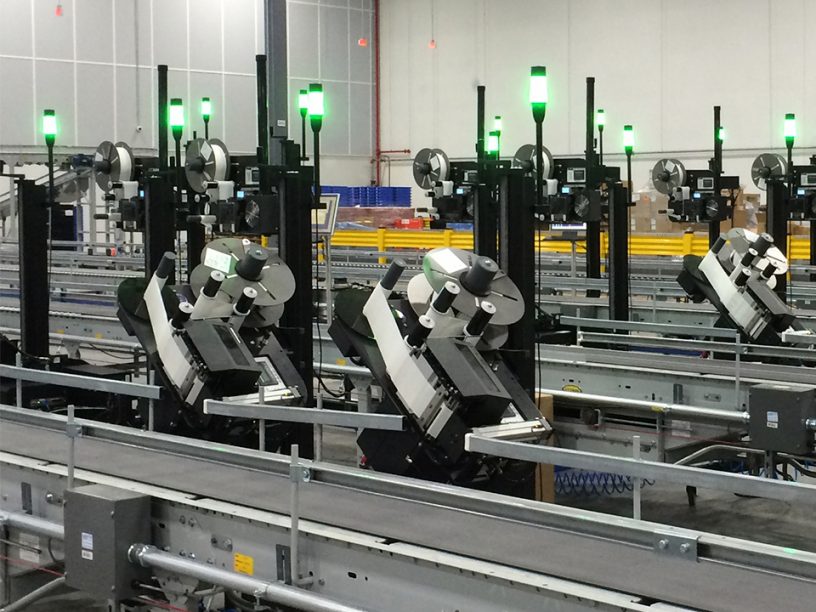Products
Print and Apply

Implementing warehouse automation involves a combination of hardware and software solutions to optimize and streamline various processes within a warehouse. Here is a general overview of the steps involved in implementing warehouse automation
- Assess your current warehouse operations: Begin by evaluating your existing warehouse processes, including inventory management, order fulfillment, and material handling. Identify areas that can benefit from automation and areas that require improvement.
- Define automation goals: Determine your specific goals and objectives for implementing warehouse automation. These could include increasing efficiency, reducing errors, improving inventory accuracy, or enhancing order fulfillment speed.
- Select the appropriate automation technologies: Based on your goals and operational requirements, research and select the appropriate automation technologies that can help you achieve those objectives. Some common warehouse automation technologies include:
- Warehouse Management System (WMS): Implement a robust WMS software to manage and control inventory, orders, and operations efficiently.
- Automated Storage and Retrieval Systems (AS/RS): Use robotic systems to automate the storage, retrieval, and movement of inventory within the warehouse.
- Conveyor systems: Install conveyor belts and sortation systems to automate the movement of goods throughout the warehouse.
- Pick-to-Light and Put-to-Light systems: Use light-guided systems to improve accuracy and speed in order picking and putting operations.



